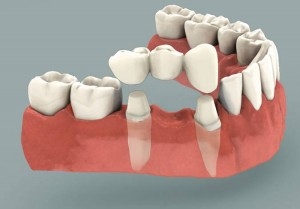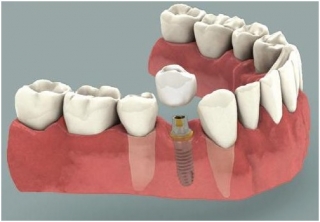Is it ok to replace an old defective dental bridge with another bridge or is it better to restore it with dental implants? Surprisingly, some general dentists recommend their patients to get another bridge arguing that the teeth supporting the old bridge are already prepared (i.e. cut down).
But is that wise?
Here are some facts to consider about conventional dental bridges: The lifespan of a typical dental bridge is on the average 6.7 years. Teeth that support bridges are prone to recurrent decay, fractures, and root canal complications. Hygiene is difficult as one has to thread the floss under the bridge and food impaction is not uncommon. Overall, they do not last very long and put the supporting teeth in jeopardy.
On the other hand, dental implants offer long term prognosis and when properly placed, restored, and maintained, they can remain healthy for life. They spare the adjacent teeth from unnecessary preparation and save money in the long run by preventing replacements and possible involvement of more teeth in the bridge. They also cost less than conventional bridges.
Considering all factors including longevity of your teeth, cost of treatment, and how your teeth feel, the best way to replace an old bridge is to place dental implants for the missing teeth and then restore each tooth and implant separately with a single crown. This also makes it easier for you to clean your teeth, Keeping the implants and the natural teeth healthy. If for any reason one or more of the teeth should require extraction in the future, one can address the problematic teeth separately without the costly loss of the entire conventional bridge.
Remember: teeth are separate naturally; Bridges are not. Dental implants let you replace missing teeth the way nature intended.

